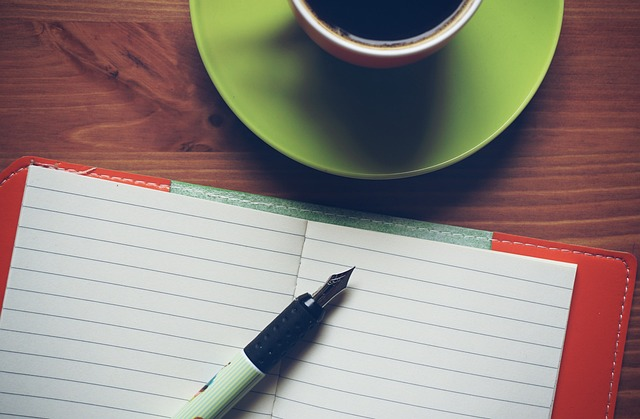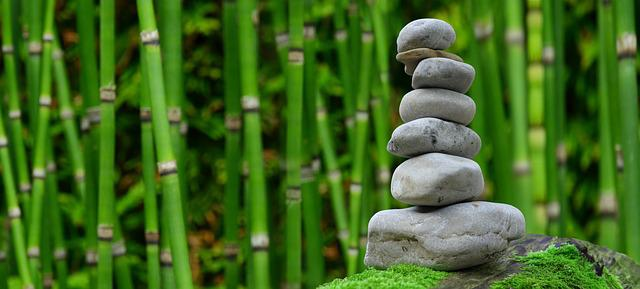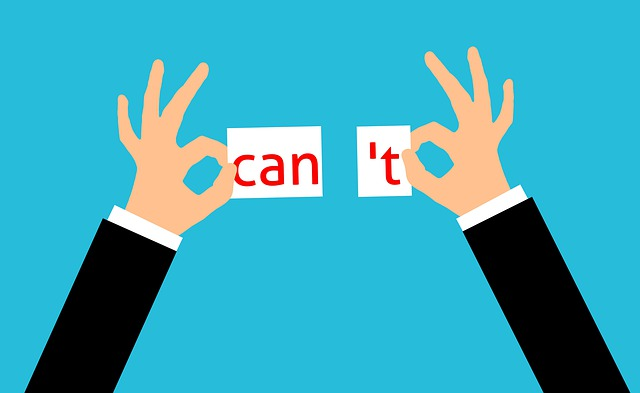I will share 5 tips to help you with the mental game in golf. Tips relevant to play your best golf every round, every shot.
“This shot”. Those two words written boldly on a white notecard refocused my performance on the shooting range after a disappointing result.
I spent my youth putting holes in paper; I was a competitive target shooter with a national ranking. I competed in the Olympic Games in Atlanta for Team USA.
Today, I have a different use for the sports psychology training received at the US Olympic Training Center in Colorado Springs, Colorado. I now play golf for fun but still have the same focus and mental discipline.
Sports Psychology and Golf
To be sure, sports psychology gives athletes mental tools to overcome pressure, increase confidence, and control their focus. An elite athlete must practice and perfect both physical and mental skills to effectively compete at the national and world levels.
What percentage of golf is mental? While I don’t consider myself qualified to answer that question, I believe the percentage is 90% or more. Recall numerous professional golfers that inexplicably stumble during sudden death playoffs. The smallest measure of mental pressure can tighten a grip just enough to perform poorly.
Elite athletes work on perfecting their mental resilience because they anticipate the pressure of playoffs and finals. While most of us have more modest goals for our golf game, many amateur golfers can benefit by incorporating elite athlete mental skills in their golf training and course play.
There are many similarities between the sport of shooting and the sport of golf. A bad shot being the most irksome in both. The reasoning behind the two-word phrase I used to refocus while target shooting applies to the mental game of golf.
“This Shot”
On the course, the only stroke or swing that matters is the next one. How we approach the next shot is all we can control when playing golf. And this is where mental preparation makes the difference.
Mental Tips to Improve Your Golf Game
Let me tell you what I’ve learned that works and can immediately help you play better golf.
1 – Written Affirmations
What do you want to achieve in your game of golf? Write it down.
Be extremely specific. Write the same affirmation several times in one sitting and come back during the day and write it again.
Before bed, write it again. I would suggest starting at least six months prior to your goal event. This works!

Example affirmation: “I am the 2023 Waterloo Country Club Women’s Championship Flight Champion.”
Write your affirmation in the first person every time and say it mentally and out loud as you are writing.
This routine makes commonplace a statement that might seem to be a lofty goal. You slowly accept this statement is possible and even likely. It is familiar. After time, it may be boring. This is when it’s working!
The trick is when you talk and write about yourself in a certain position, you increase confidence in the physical event manifesting because you’ve prepared for it.
It’s something you’ve seen and said many times. How could it not be possible or true? You know it to be true.
When preparing for a tournament with positive affirmations, there’s less mental pressure playing in the tournament because you’ve been there already. Your head knows it is possible to do very well.
Your name on the leader board with the lowest score is expected. You are a consistent, good golfer. Winning is expected.
Now you can more easily putt, swing, and hit the ball with less mental pressure of competition and the competitive environment. You are present and prepared. What a great feeling!
2 – Golf Pre-Shot Routine

Establishing a pre-shot routine should be one of the easier mental skills to master, and most golfers likely already have their own process.
What is a good pre-shot routine? The answer is whatever works for your game and increases your confidence on the course.
The best physical tips include a consistent approach to the tee, to the ball and the entire swing including follow-through.
The best mental tips include simple thoughts, positive affirmations and even losing oneself in “the routine” during the shot.
Keep it simple!
And keep your entire pre-shot routine to a reasonable period of time so you remain a courteous golfer. It should be short and used for all shots (short game and putts too) without fail to end of the hole.
Practice your pre-shot routine on the driving range and on the course. Check out this post for a more in-depth look at developing your golf pre-shot routine.
3 – Meditation for Golfers

Practice visualization skills. Your brain and body do not know the difference between visualizing hitting a perfect shot and physically hitting a perfect shot.
The most difficult part of this technique is truly immersing yourself. You should see the golf course, smell the grass, hear the buzz of activity around the first tee, and feel the club in your hands as if you were ready to start 18 holes.
This takes dedication and much practice. Practice with perfection as the goal. You should be performing perfectly in your minds-eye. Your technique and results are perfect.
When to Practice your Mental Golf Game
When should you practice visualization? While you are learning these techniques, you should practice at least daily for a minimum of 10-15 minutes.
Practice in a quiet environment conducive to concentration. Maintaining your focus during mental exercises will be difficult at first so keep distractions to a minimum.
I like to sit eyes-closed in a comfortable chair with soundproof headphones. Others prefer music or nature sounds during their practice. Experiment and find what environment allows you to focus on your mental game.
Take a break and try later if you find a particular session ineffective. As you become more adept at visualization, you can stay in the practice longer and make the session more elaborate.
Tailor your scenario and your experience to the actual golf game you will be playing. Make your mental golf practice real and relevant.
Applying Your Mental Golf Game
Now that you have some experience in visualization in your controlled environment, feel free to apply the mental technique to your round of golf.
Adaptions will have to be made as time will be limited to enter your visualization and then actually play your shot. I liken it to a fast-forwarded version of my at-home visualization scenario when I am playing on the course.
Not to be confused with hurrying or rushing my shot, but I see my visualization scenario move quickly and fluidly. I don’t close my eyes while playing on the golf course; I mentally zone out for a few seconds and complete the visualization for every shot.
Again, successful real-time visualization (our end goal) will take time to achieve.
Practice at home and practice for every shot in your game. Give it time! Start with simple scenarios like arriving and hitting a perfect ball on the first tee. You can and will grow your golf visualizations.
Elite athletes might visualize the entire event multiple times. Starting with an achievable goal will keep you engaged and interested in your mental game practice.
Mastering Your Golf mental game
Now that you are prepared to tackle visualization, another piece to mastering this skill is knowing what hitting a perfect ball feels like. If you struggle with a particular part of your swing, concentrate on seeing yourself performing the swing with perfect form.
Close your eyes. Feel the light, even pressure of your hands on the golf club. Scan your body to identify the muscles working in your golf swing. Slow down the process of your swing. Feel every muscle engage as you take your backswing to the perfect height and angle. It’s effortless.
Transition slowly into the downswing. Again, feeling every muscle lending its power to the next until you strike the ball. As your body rotates and moves through the ball and finishes the sure swing, the momentum of follow through is natural and complete.
Now try visualizing a putt. See the lie of your ball as you approach the green. Feel the breeze on your arms and observe the direction of the flag. Absorb all the information available to you. Start your pre-shot process. Everything is perfect. You feel confident and perfectly aligned.
You get the idea! Use visualization for short game, tee shots, putts and any situation you encounter in your game.
4 – Golf Mental Scorecard

A “golf mental scorecard” is a mechanism to maintain a process oriented approach to the game. For example, you might track greens in regulation, number of putts, and whether you maintained a positive attitude on that particular hole.
You can keep track of whatever is helpful to you! You may even be able to record what is helpful on your game scorecard.
Whatever information you find helpful, but it needs to be consistent!
For those with more time, a diary may be a better choice. I like to see what notes I have taken about the weather conditions, playing partners and even what outfit I chose.
Why? There might be an advantage to tracking this information. I might find that I play better on cloudy days or in a skirt vs pants.
At a minimum, I’ve recorded important information about my shots and force myself to evaluate each shot. Then I move on because only the next shot is important in my game.
5 – Positive Self-Talk & Mental Golf Game Quotes
How do you talk to yourself after a bad shot? Improve your mental resilience and focus on positive self-talk on and off the course.
Here I can quote some golfers that know the deal:
“Success in golf depends less on strength of body more of strength of mind and character.” – Arnold Palmer
“I smile at obstacles.” – Tiger Woods
“The most important shot in golf is the next one.” – Ben Hogan
“Golf is a game that is played on a five-inch course – the distance between your ears.” – Bobby Jones
“A bad attitude is worse than a bad swing.” – Payne Stewart
“Of all the hazards, fear is the worst.” – Sam Snead
Personally, I prefer positive quotes like Tiger’s, but it is important to know what we should avoid. Once a negative thought creeps into your mental game, it is not easily removed.
Expectations

I play golf for fun, light exercise, and to spend time with friends. All my mental tips, training, and prowess will not likely put me on the ladies’ pro tour; however, I enjoy every round of golf because I play my golf game at my very best that day.
Or at least that is my goal.
Improving your mental golf game and following these tips should at a minimum help you to compartmentalize bad shots and reduce pressure.
Good mental golf will keep you forward-focused and more positive for each shot.
While improving your mental game in golf is certainly not a guarantee of becoming an elite golfer, I promise you will feel better about your bad shots and leave the course armed with information for the next round by following my mental tips.
Final Thoughts
90% of the golf game is mental. Keep your attitude crazy positive on the golf course; every shot envisioned as an opportunity to improve. “This shot”. It is truly all that matters, and all we can affect in our game.
Practice perfectly to get maximum results from your game and more satisfaction in playing. Winning is the most fun so get an advantage by embracing golf as a mental game.
Good luck!
